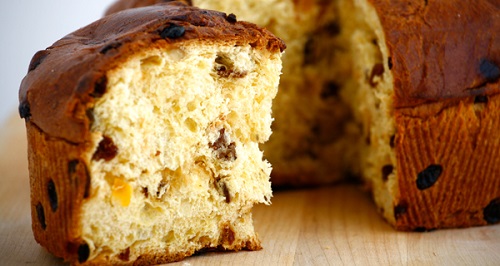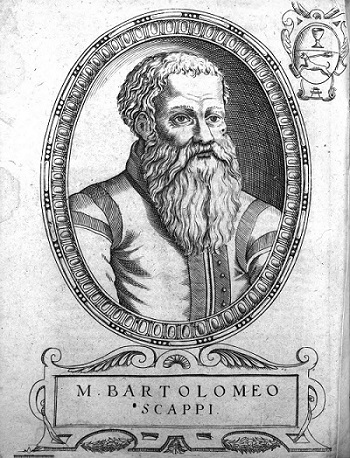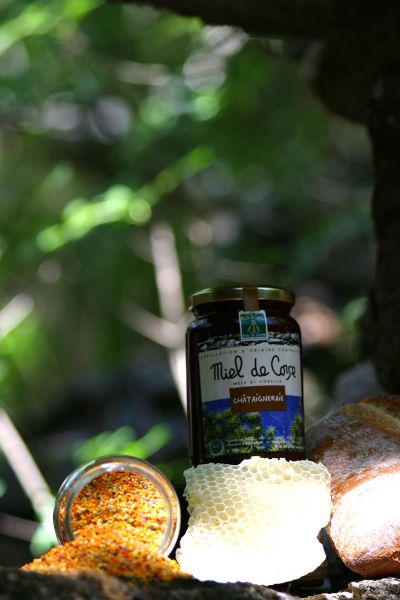
As you all know, traditional fare at Christmas throughout Italy is the famous panettone, the vanilla flavoured sugarloaf baked with raisins and other dried fruits. Although various legends have tried unconvincingly to explain its origin, panettone unquestionably originated in Milan.
Founded by the Insubi Celts around 600BC, Mediolano, as it was then known, was a place that observed the Celtic celebrations of the rebirth of the Sun at the winter solstice (around a period of what would become the Christian Christmas), a feast intended to promote a rich harvest from the crops that were generally sown from January and early February onwards. Called Yule, this was the first seasonal festivity celebrated by the Neolithic tribes of northern Europe. And on that occasion, the Druids, Celtic priests, offered to each other and then to the assembled people a type of sugarloaf made with barley and filled with apples and raisins. This, the main sacred food of the Yule festivity, was eaten together with a drink of barley fermented with honey.
Milan, conquered by the Romans in 222BC, became part of the Empire and was henceforth known as Mediolanum. However, Celtic customs and practices were absorbed by Latin traditions; at this time, for example, the winter solstice became the time for the celebration of the birth of the Sun god Mithras, a date which would subsequently become that of the birth of Christ. The Romans also celebrated Saturnalia, which marked the triumph of Saturn [associated with winder when the Sun was “underground”] over Jupiter [associated with winter Sun and therefore Summer]. For them, Saturn represented the Golden Ag, the original Sun from which Jupiter himself descended.
During the Saturnalia no one worked and candles and bonfires illuminated the night. Copious feasting played a large part in the festivities, with participants being served a ritual cake after the celebrations. Baked with wheat or barley flour, this was sweetened with honey and stuffed with fruits then in season. This baked wheaten mix was the origin of the host in Christian celebrations, while Roman historians of the second and third centuries AD spoke of the Milanese origin of panettone, a “large sugarloaf” made of a dough that had been set to rise, then placed in a mould and baked in an oven.
Its reputation and fame established panettone as a regular part of Christmas form the 18th century onwards. For example, the philosopher and historian Pietro Verri (1728-97) referred to it as pane di tono [luxury bread] to be eaten on special occasions only. Even before that, the Flemish artist Pieter Brueghel the Elder (1525-69) painted a picture in which a large panettone on a table is identified as “Cake with Seasonal Fruit”. The image was probably inspired by the Bartolomeo Scappi’s recipe book (see a previous blog). The Dutch painter Jan Albert Rootins (1615-74) also included a magnificent panettone right at the centre of his Still Life with Fruit.
The expression pane di tono having lost its original meaning, people opted for a more immediate and down-to-earth explanation. Thus the legend of the Pane di Toni came about, attributing the creation of panettone to a baker called Toni who had worked in the Della Grazie bakery in Milan at the time of Ludovico il Moro (1452-1508). The young man, in love with the boss’s daughter, was said to have invented the sugarloaf in order to impress the father of his beloved. Customers then began to ask for the pane di Toni by name, the expression developing into the Milanese panaton and finally the Italian panettone.
Another legend has it that it was invented at the very court of Ludovico il Moro on Christmas Eve some time in the years 1494-1500. On one of those Christmases, the planned dessert was burned while being cooked, so one of the kitchen hands – again called Toni – who had mixed up leftovers into sugarloaf for himself, served his creation to the court. It is said that the dessert was such a success that Ludovico himself asked what it was called. When the young Toni was called to answer the question, he said it had no name. There and then Ludovico decided it would be called pane di Toni, later transformed into panettone.










